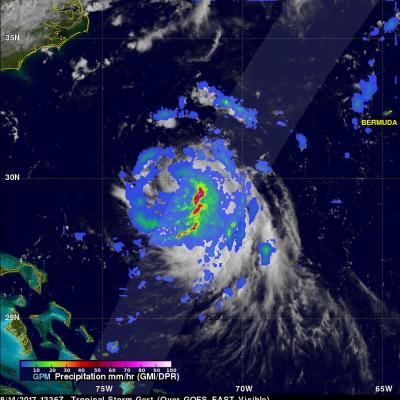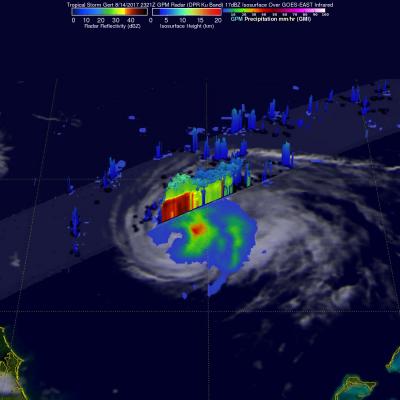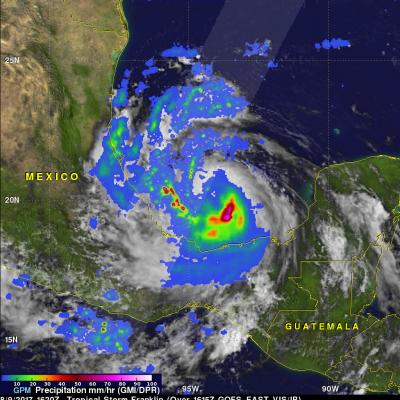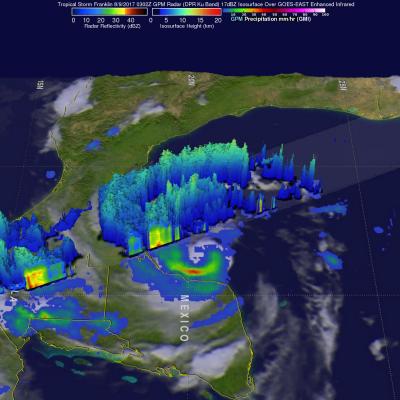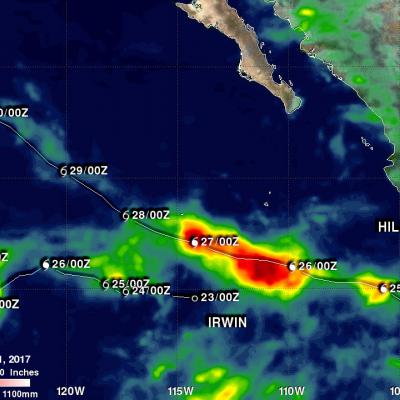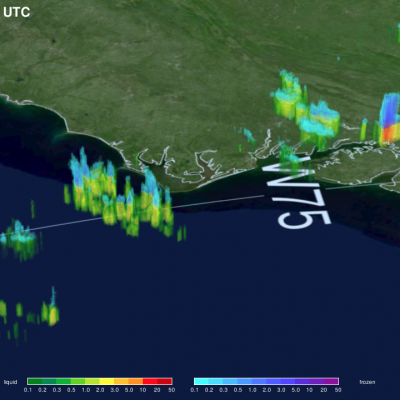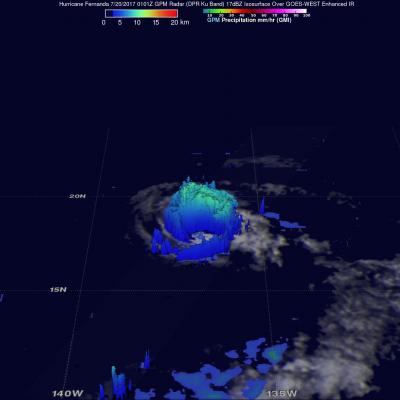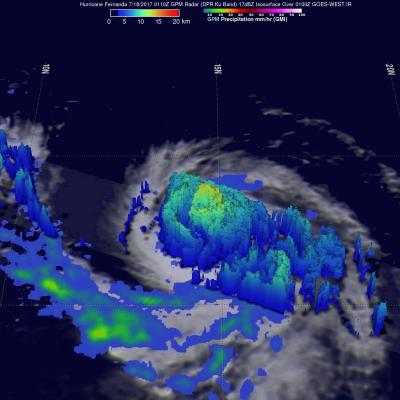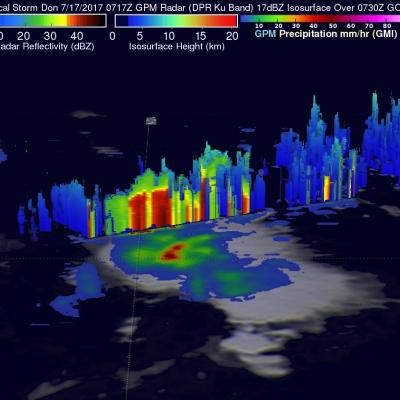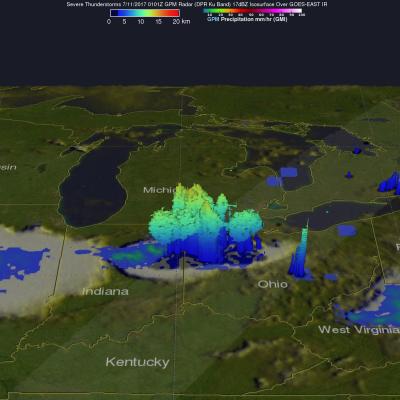More Organized Tropical Storm Gert's Rainfall Examined by GPM
The GPM core observatory satellite passed above tropical storm Gert on August 14, 2017 at 9:36 EDT (1336 UTC) when winds had reached about 57.5 mph (50 kts). Data collected by GPM's Microwave Imager (GMI) and Dual-Frequency Precipitation Radar (DPR) instruments were used to show the coverage and the intensity of rainfall arround tropical storm Gert. The area covered by GPM's radar swath (shown in lighter shades) revealed that the most intense rainfall, measuring greater than 3.5 inches (90 mm) per hour, was located in bands of rain on the eastern side of the storm. This GPM pass was mentioned


